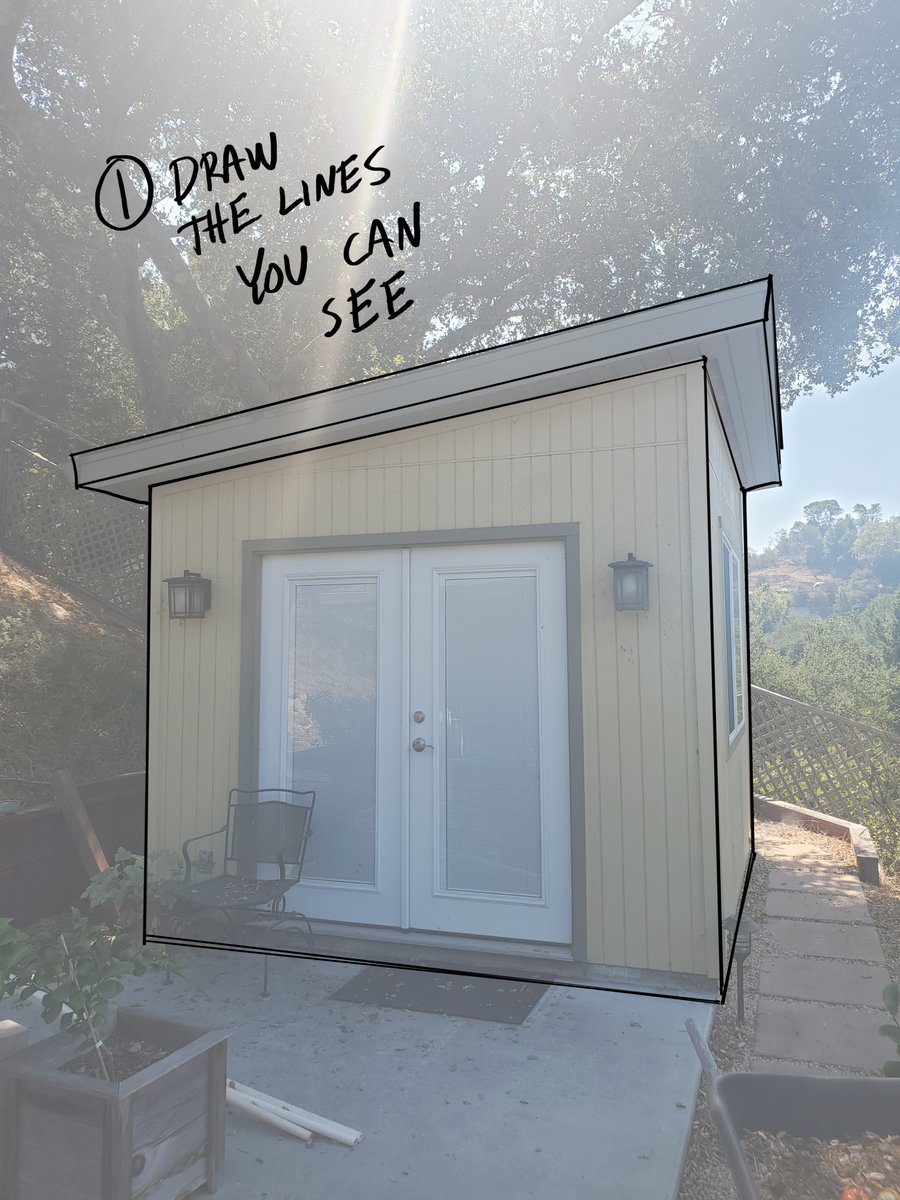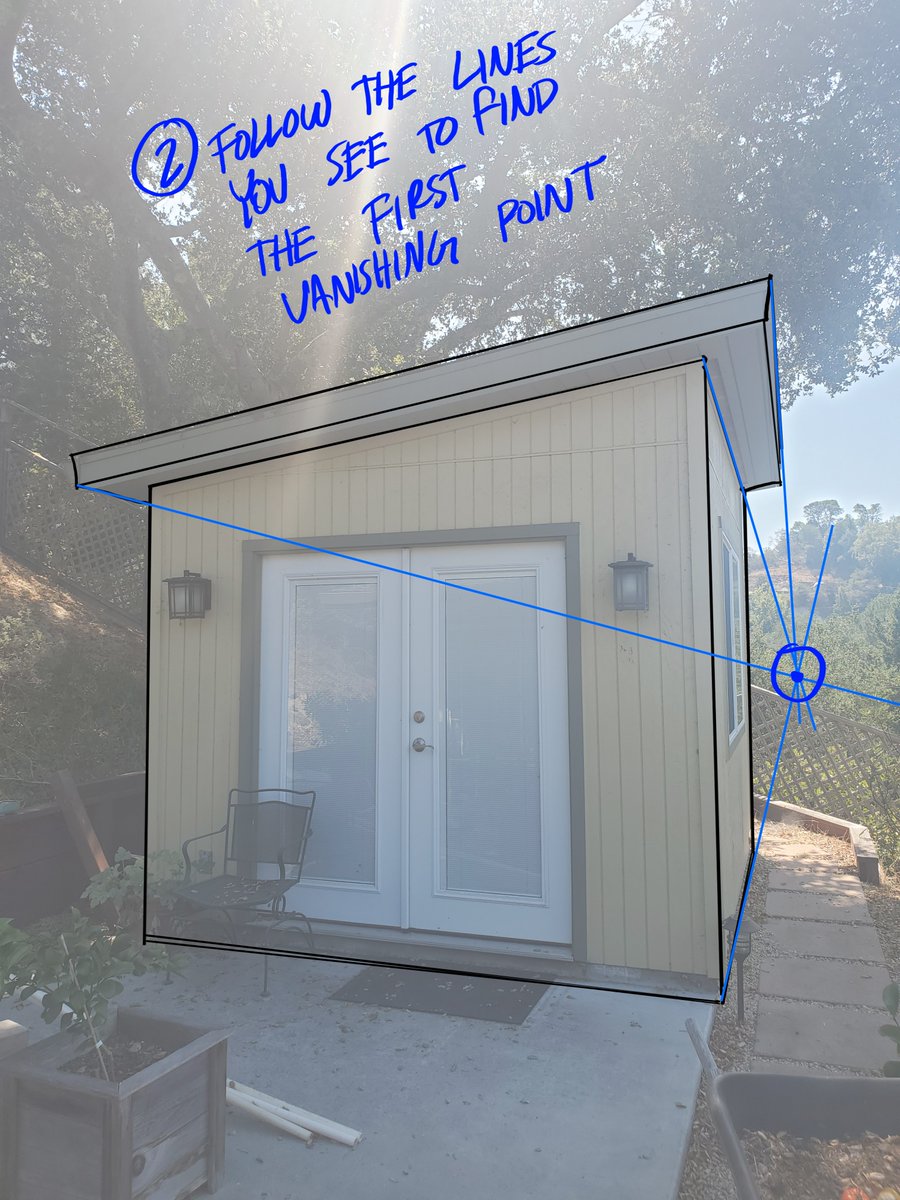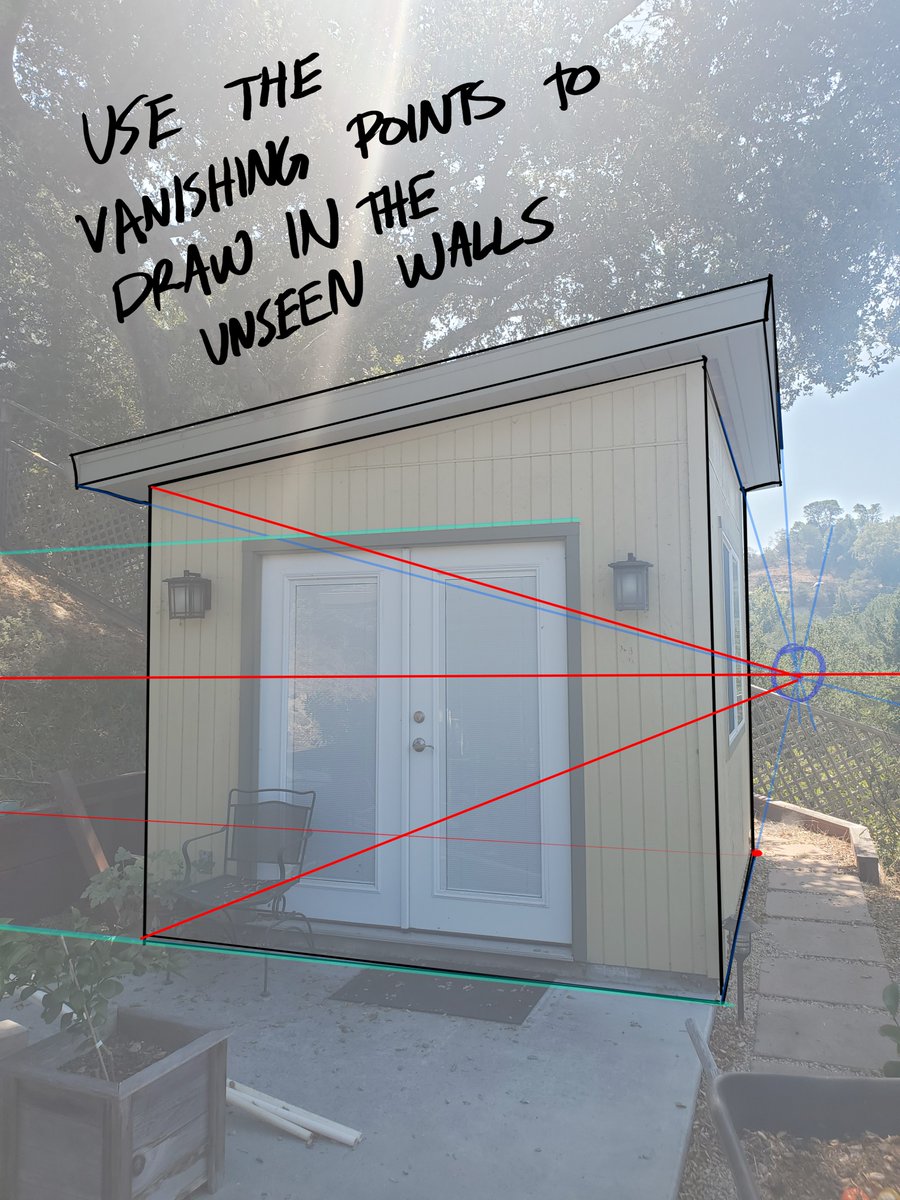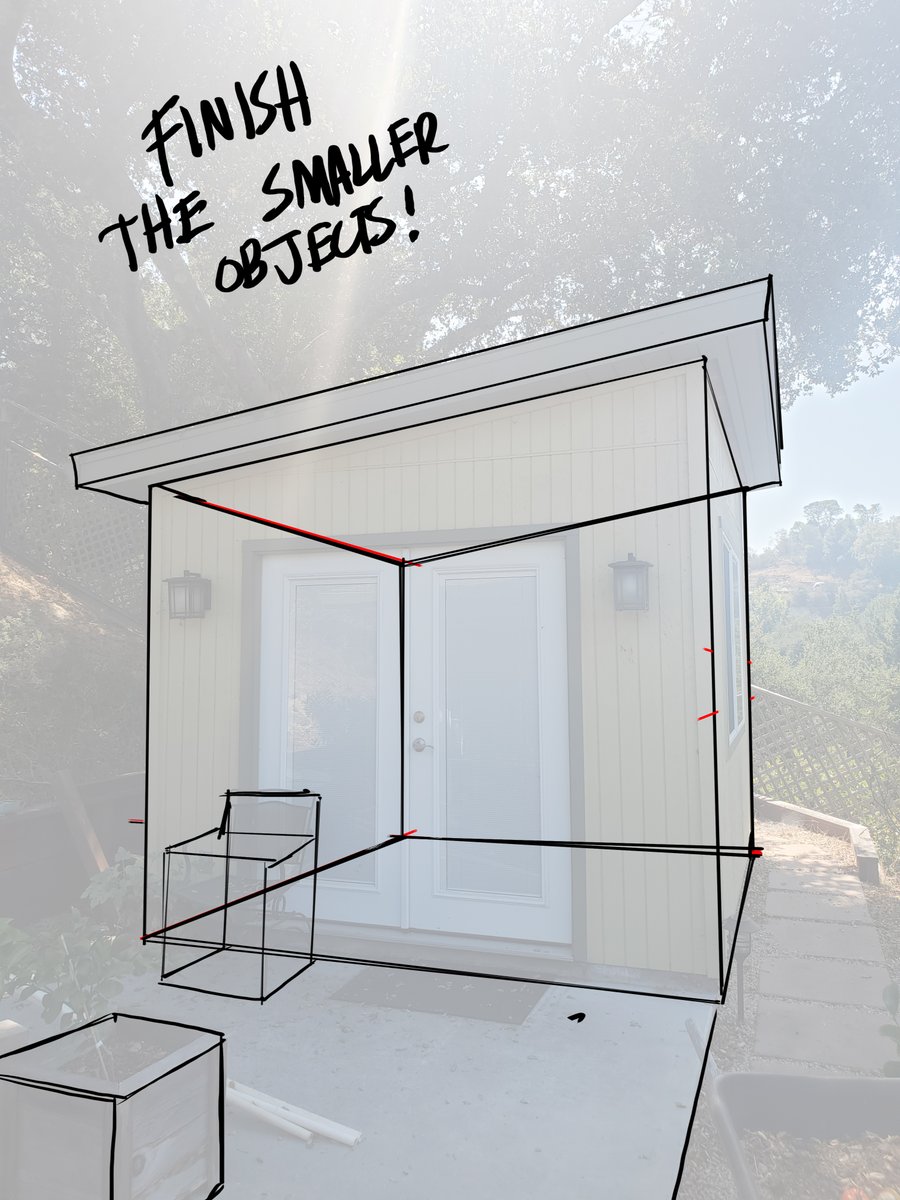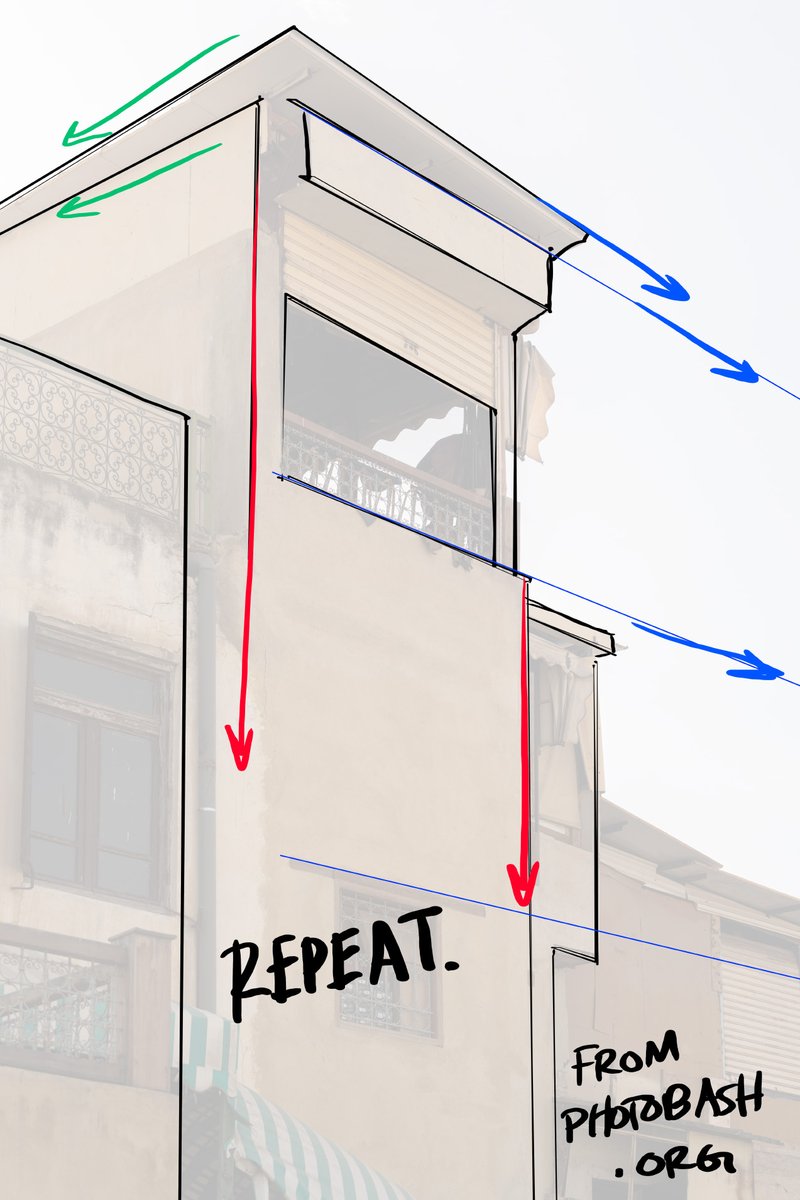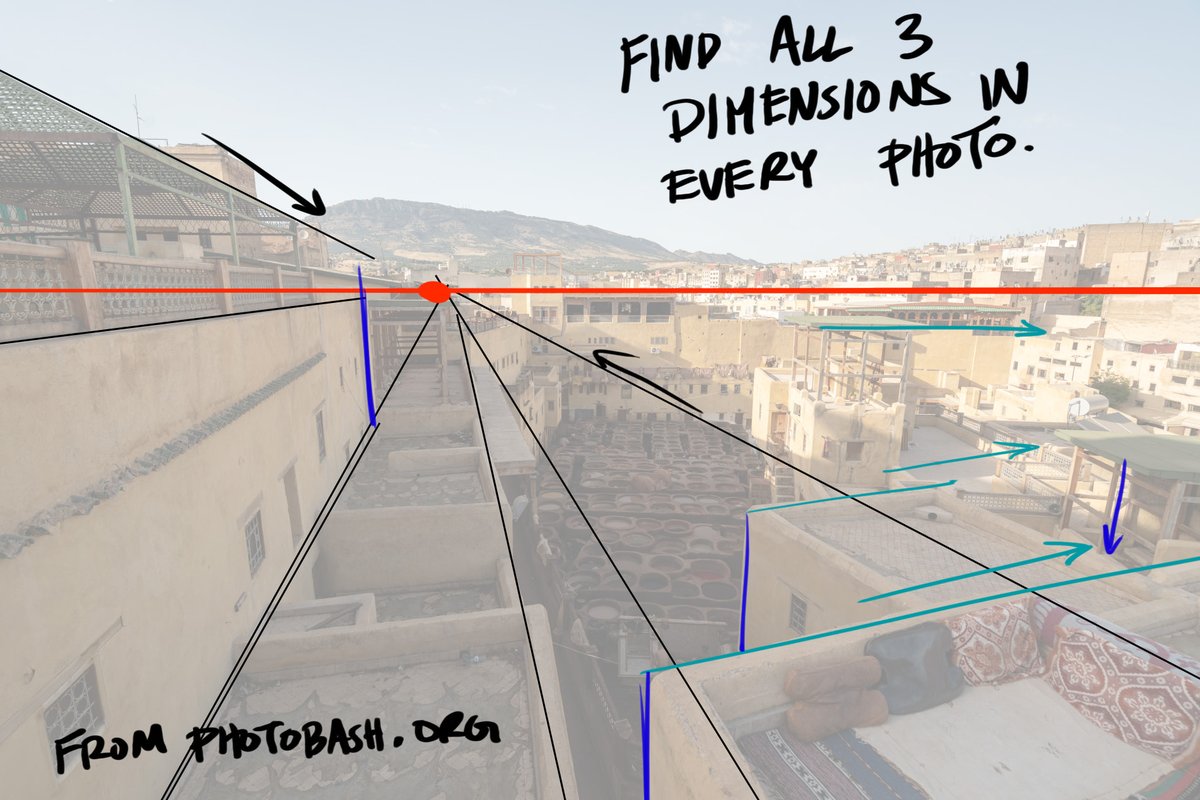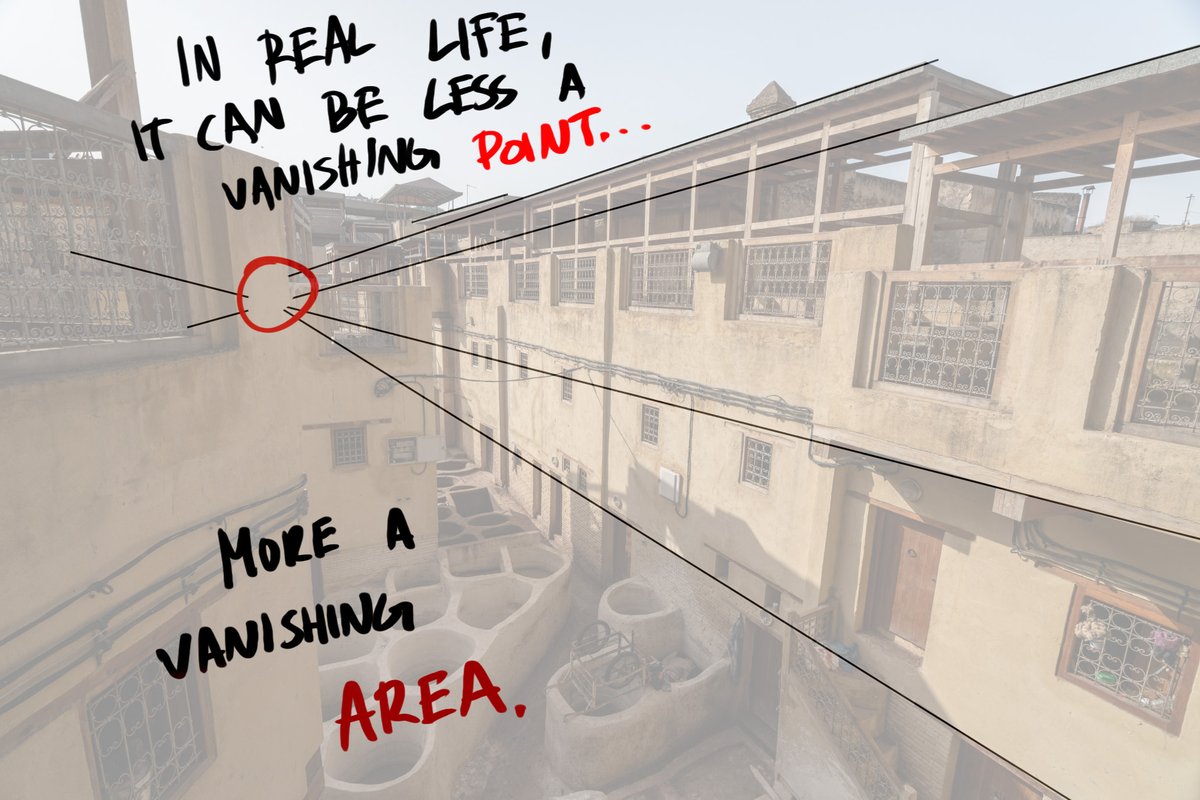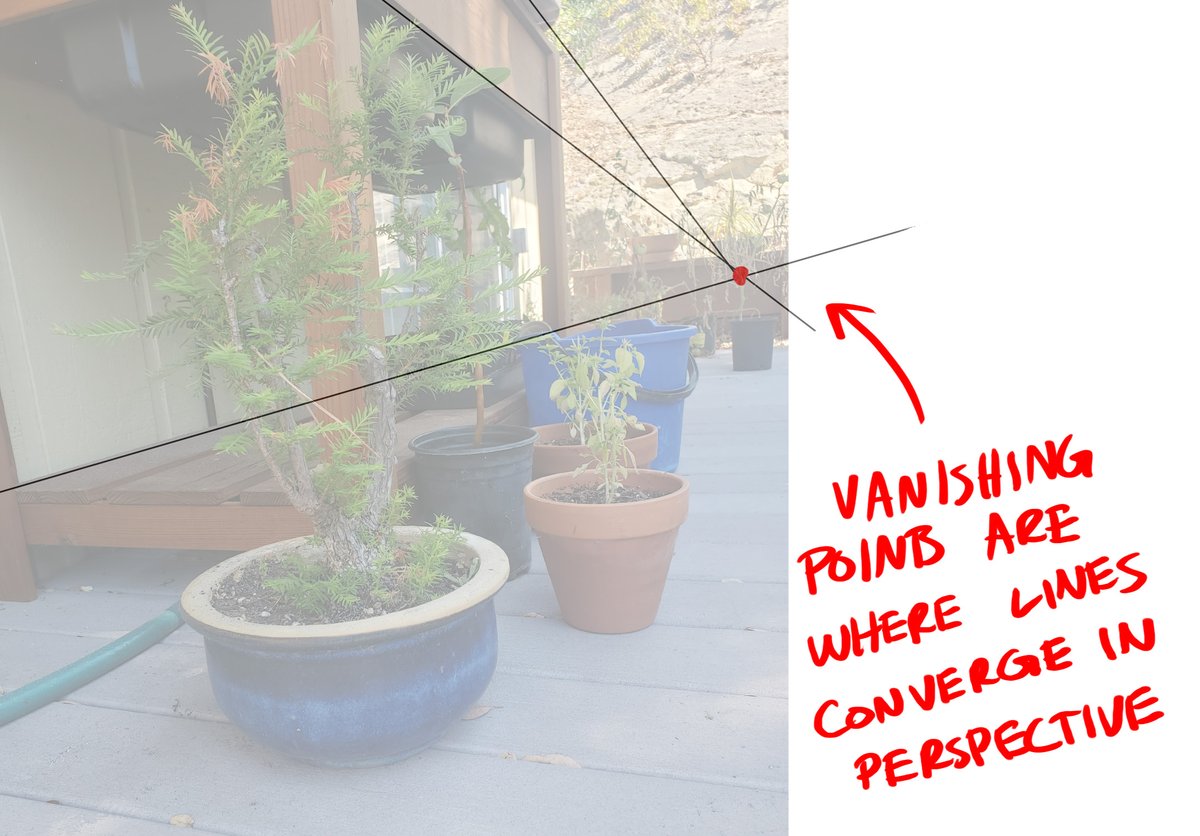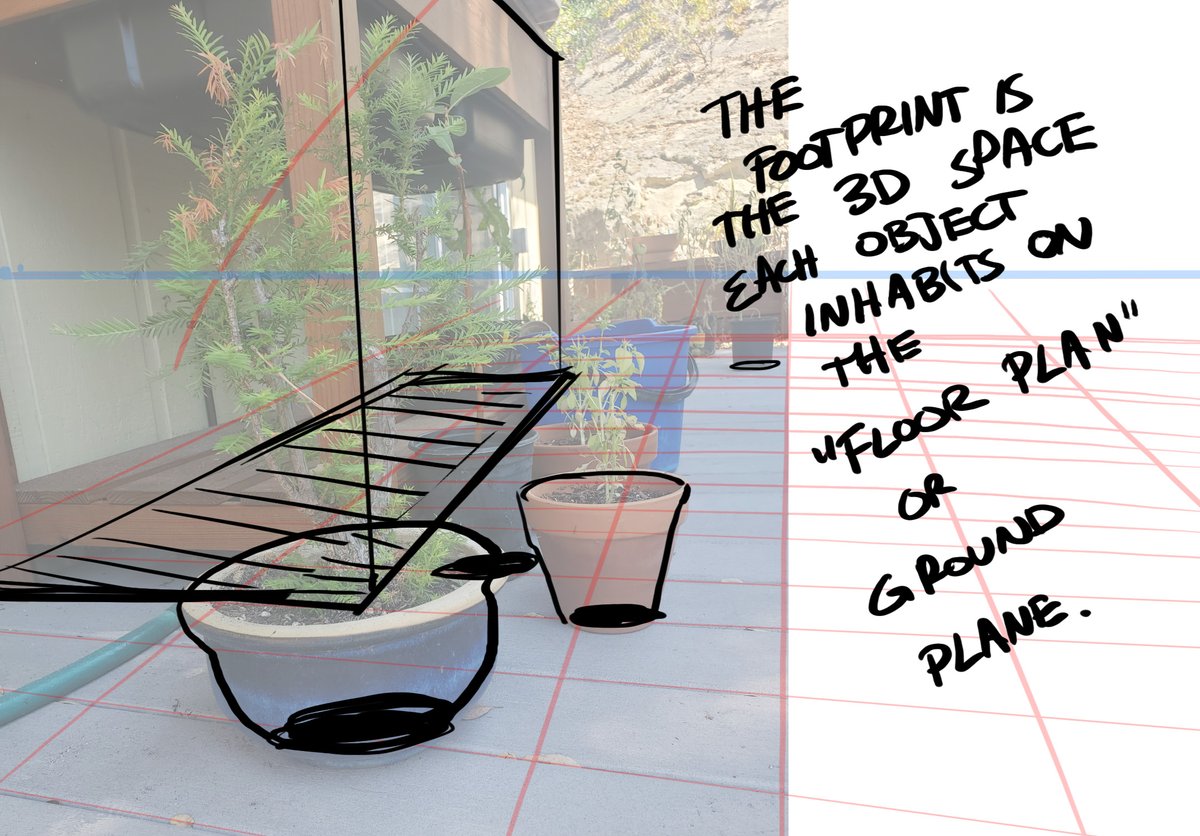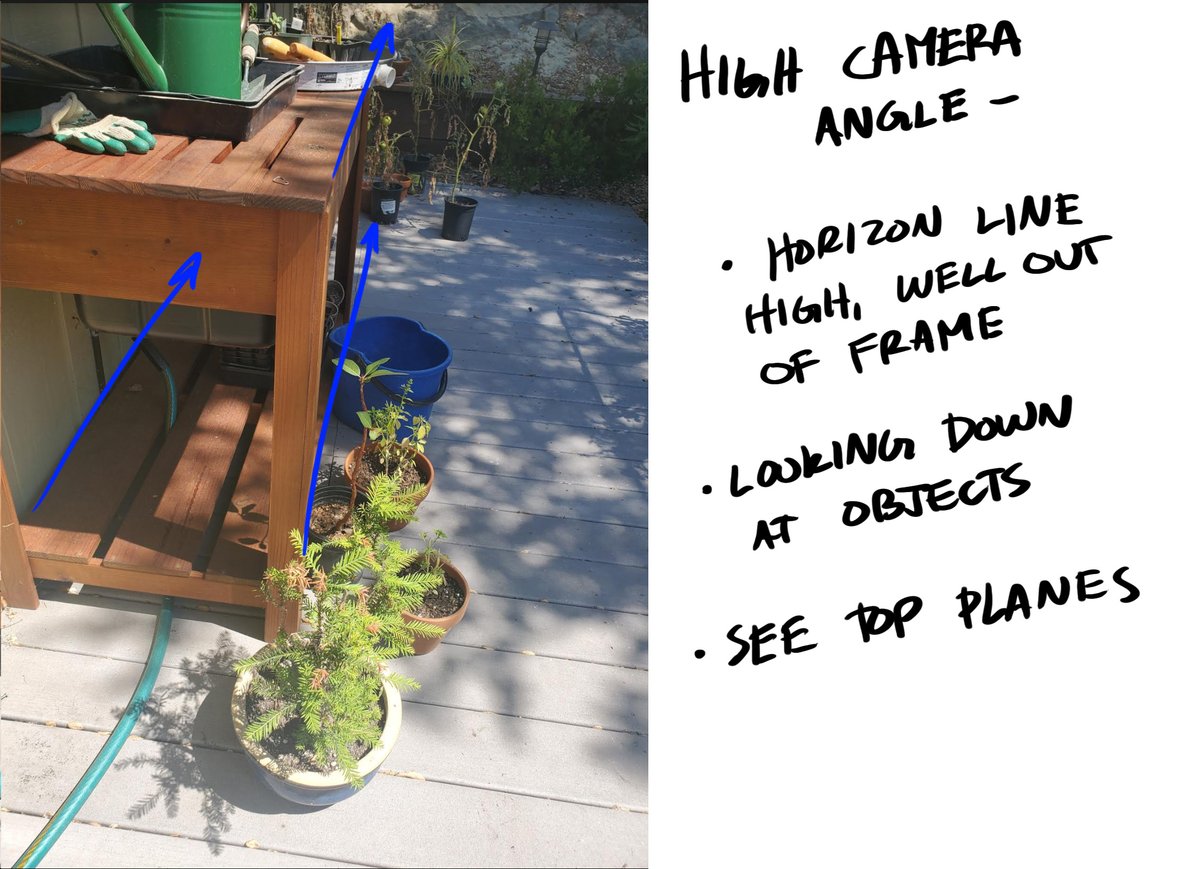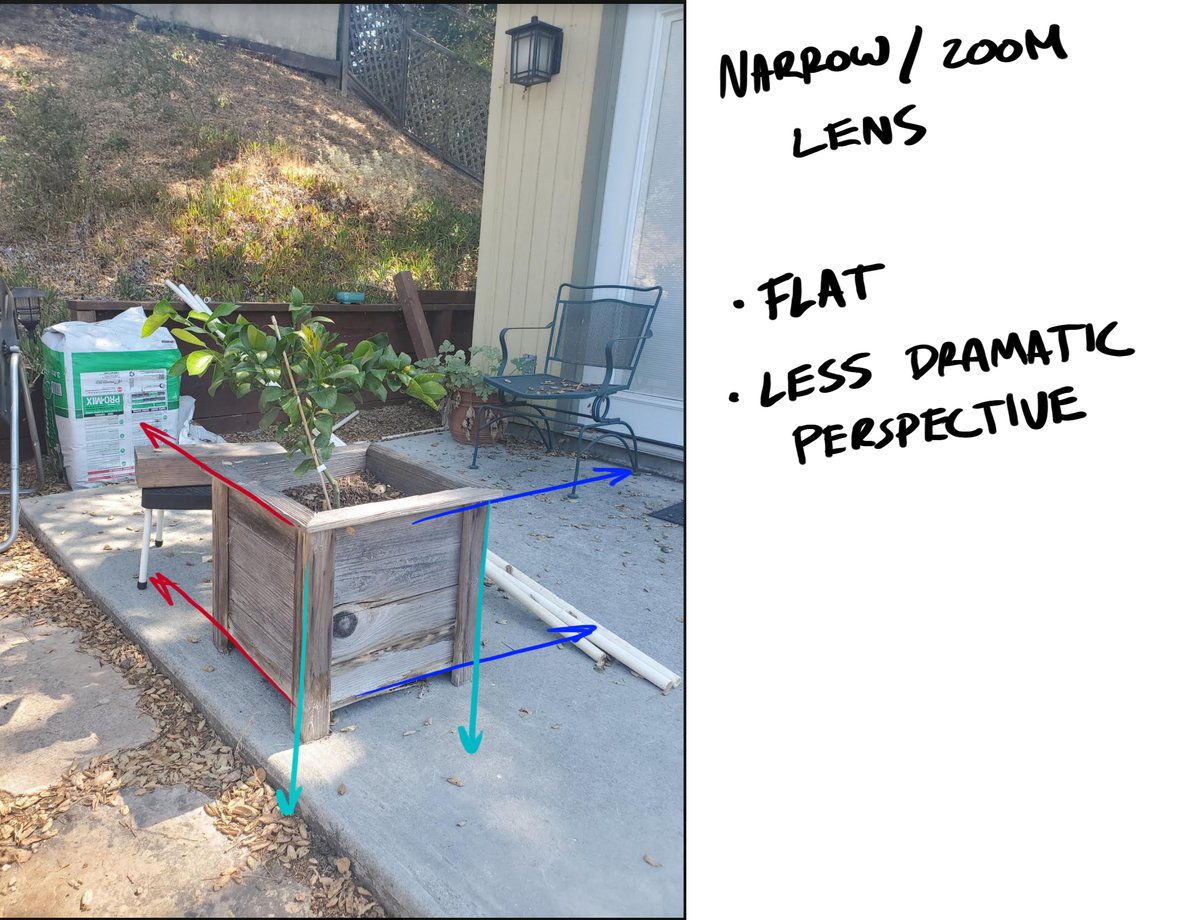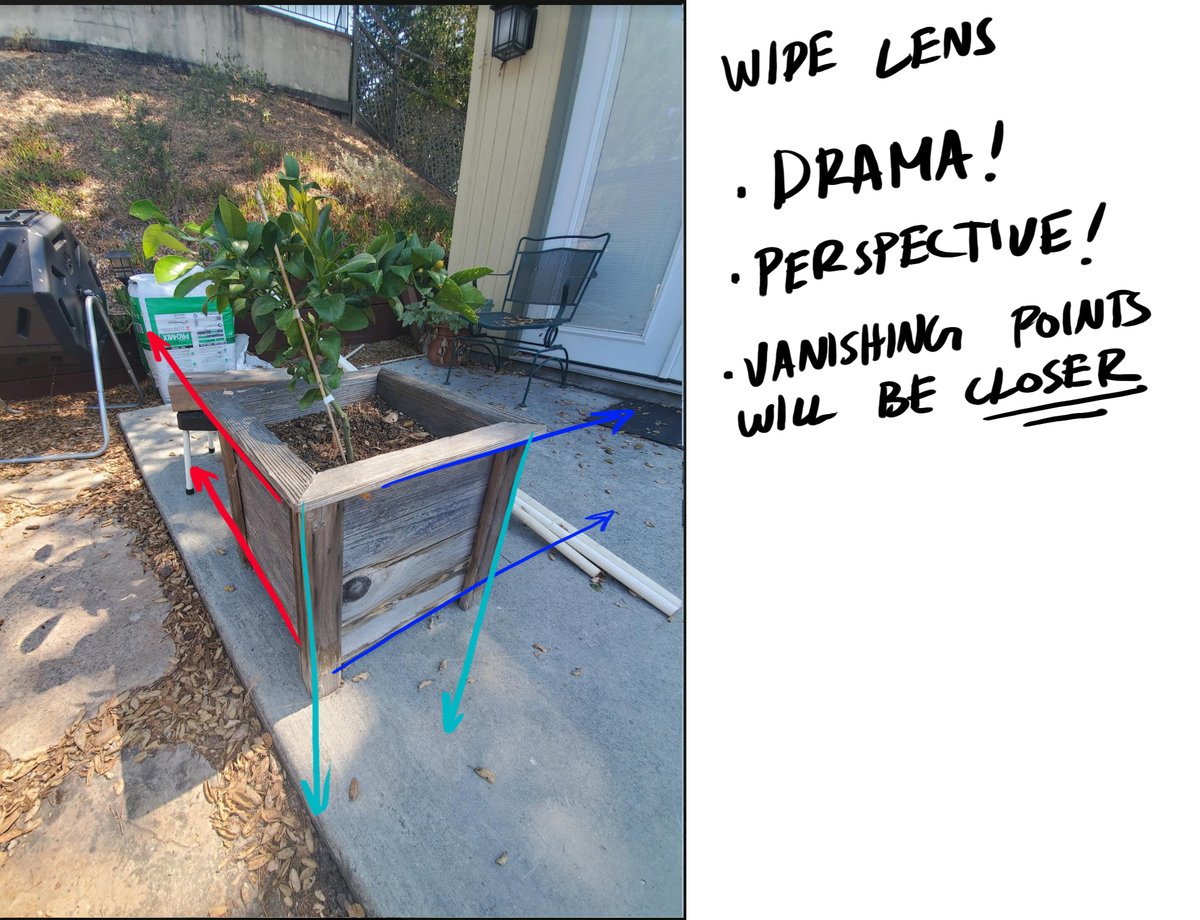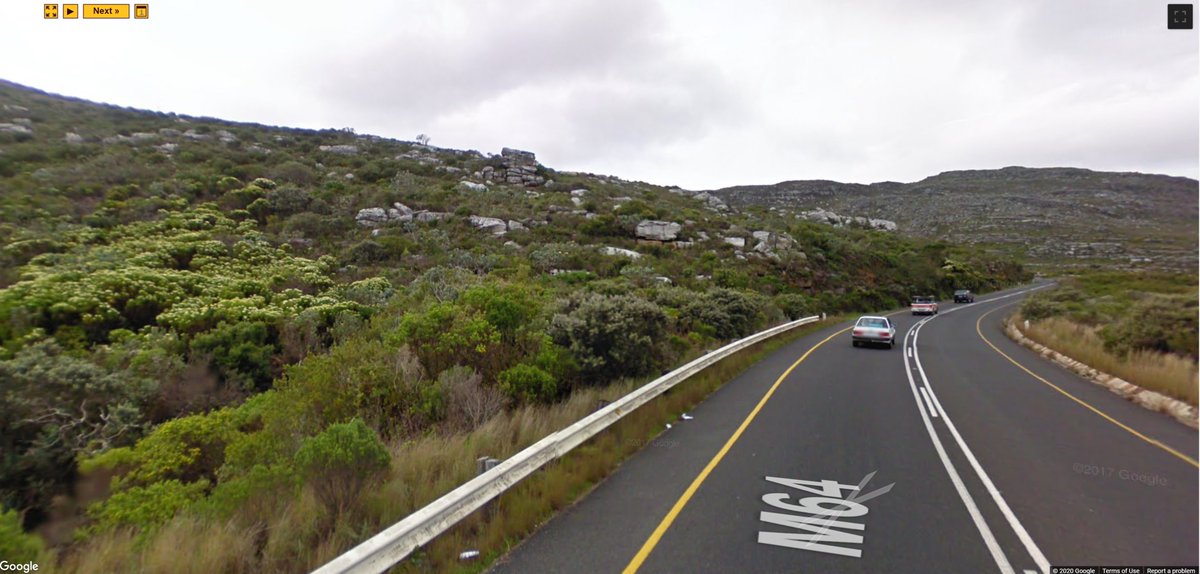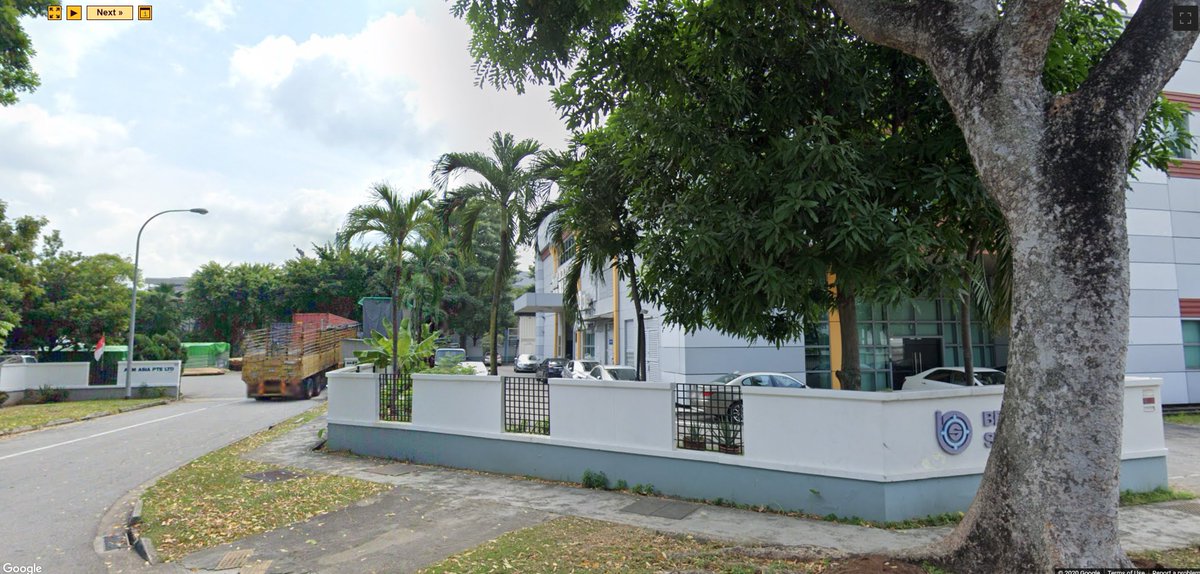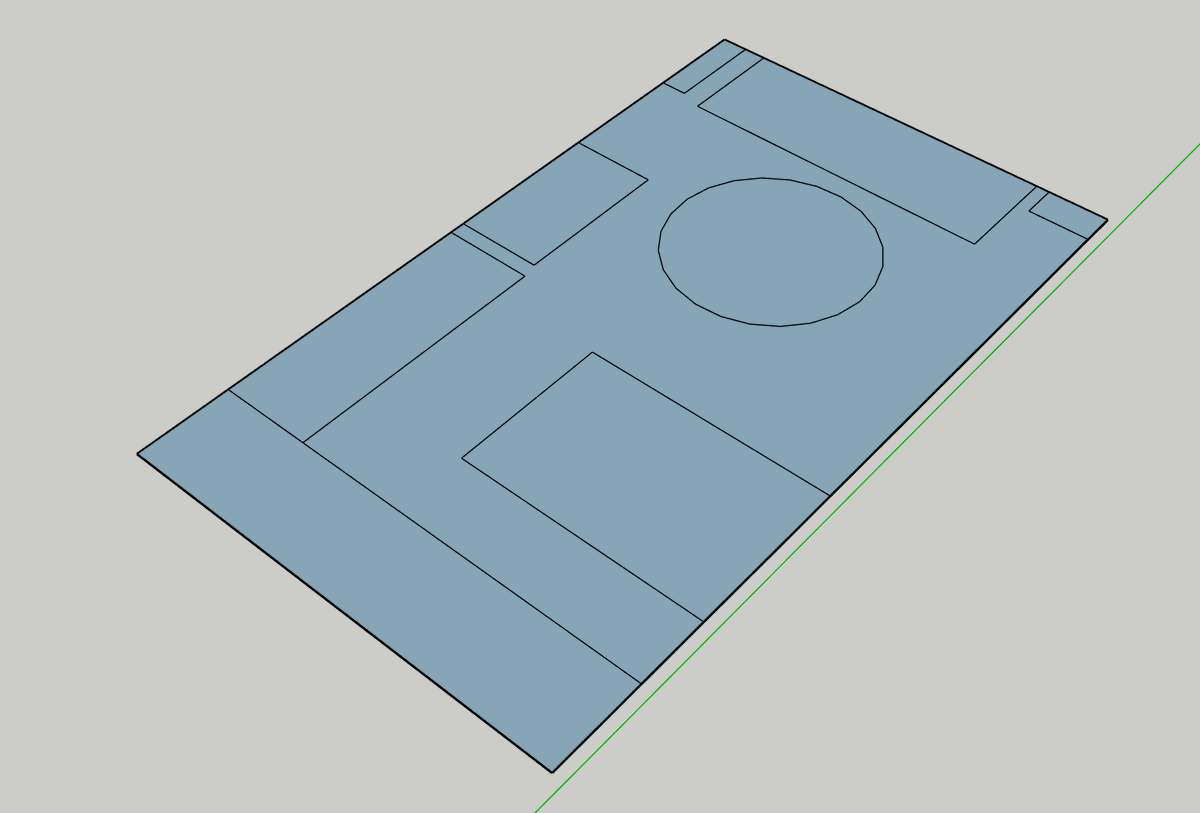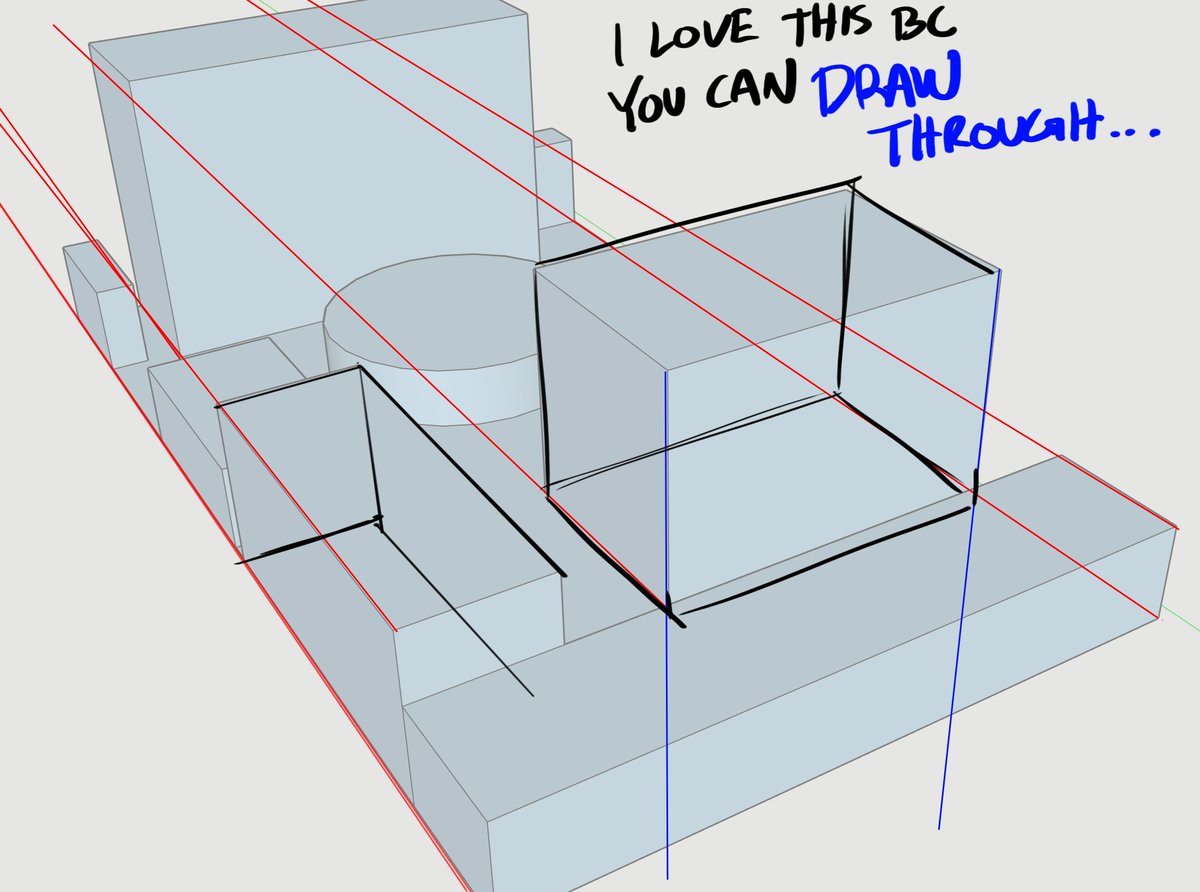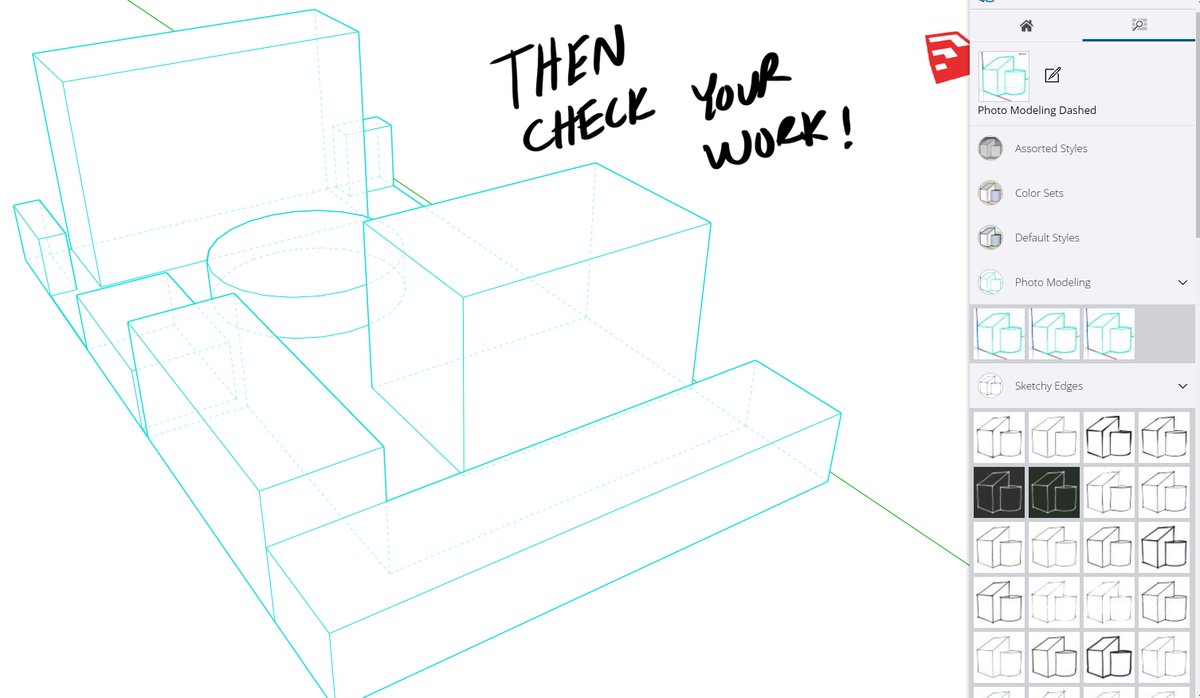How to Visualize 3D Space - A quick DIY thread guide
If this is hard for you, you’re in good company; this was one of the hardest learning curves for me & for many others.
Here are some exercises to kickstart your visualization.
1) HOW TO FIND THE BACK WALLS p1
(1/?)
If this is hard for you, you’re in good company; this was one of the hardest learning curves for me & for many others.
Here are some exercises to kickstart your visualization.
1) HOW TO FIND THE BACK WALLS p1
(1/?)
HOW TO FIND THE BACK WALLS p2
This is a fun building because the roof slants up, it adds more interest than a simple box.
Go out and collect photo references using your phone, and start drawing over them. Draw ALL THE WAY THROUGH and find the back walls.
This is a fun building because the roof slants up, it adds more interest than a simple box.
Go out and collect photo references using your phone, and start drawing over them. Draw ALL THE WAY THROUGH and find the back walls.
Continue collecting photo reference. Take your phone out all the time and walk through life as a director. Train your brain to start seeing all 3 dimensions, and where the lines are converging.
You can also make use of websites like http://Photobash.org"> http://Photobash.org
You can also make use of websites like http://Photobash.org"> http://Photobash.org
Recap: As you draw over photos, find the following:
-vanishing points
-horizon line
-ground plane
-”footprint” of each element of the environment
Continue with these exercises and you will slowly start to comprehend how items are sitting in space.
-vanishing points
-horizon line
-ground plane
-”footprint” of each element of the environment
Continue with these exercises and you will slowly start to comprehend how items are sitting in space.
2) START EXPLORING THE CAMERA
First understand how a low or high camera position will affect the same objects in a setting.
When painting, the camera becomes us- the viewer. Where is the viewer in each scene? What is our vantage point? DIRECT your scenes!
First understand how a low or high camera position will affect the same objects in a setting.
When painting, the camera becomes us- the viewer. Where is the viewer in each scene? What is our vantage point? DIRECT your scenes!
Next, start exploring lenses. If you’re able to borrow a camera in person this will be really helpful, but you can also watch youtube tutorials. Really start paying attention to whether a photograph was taken with a wide or narrow/zoom lens.
FIND THE GROUND PLANES AND CONTACT POINTS
I know I& #39;ve said this already but this is VITAL. You need to understand where the ground is and how each object is sitting on the ground.
This is how you will begin to build UP your own scenes with things that sit in believable space.
I know I& #39;ve said this already but this is VITAL. You need to understand where the ground is and how each object is sitting on the ground.
This is how you will begin to build UP your own scenes with things that sit in believable space.
TIPS for this stage:
-Use Google Streetview and Google earth to collect reference and move through 3D space. Envision how the lines are converging in perspective as you move thru the space.
-Find hills and slopes to start understanding how uneven ground affects space.
-Use Google Streetview and Google earth to collect reference and move through 3D space. Envision how the lines are converging in perspective as you move thru the space.
-Find hills and slopes to start understanding how uneven ground affects space.
3) FLOOR PLANS AND SKETCHUP
Next you& #39;re going to take what you& #39;ve learned and construct floor plans, either drawing them or constructing them in sketchup.
I think sketchup (free google software) is great bc you can extrude the floorplan up and move the camera around.
Next you& #39;re going to take what you& #39;ve learned and construct floor plans, either drawing them or constructing them in sketchup.
I think sketchup (free google software) is great bc you can extrude the floorplan up and move the camera around.
USE SKETCHUP LIKE A DIRECTOR
Model your basic forms in sketchup (LOTS of tutorials on youtube, sketchup is free)
Move the camera around, and also change the *depth* of the lens. This is one of the best tools to learn to visualize depth and form
Model your basic forms in sketchup (LOTS of tutorials on youtube, sketchup is free)
Move the camera around, and also change the *depth* of the lens. This is one of the best tools to learn to visualize depth and form
Next, as we move into constructing our own spaces...
USE BASIC FORMS TO LAY IN YOUR ENVIRONMENTS
Cylinders are much easier to place in perspective than sharks.
USE BASIC FORMS TO LAY IN YOUR ENVIRONMENTS
Cylinders are much easier to place in perspective than sharks.
As you start to draw your own full environments, focus on finding the SAME elements that you have been studying:
-Ground plane
-Horizon line
-Camera angle (low? high?)
-Lens (wide? narrow?)
-All contact points w ground
-Draw through everything!!
-Ground plane
-Horizon line
-Camera angle (low? high?)
-Lens (wide? narrow?)
-All contact points w ground
-Draw through everything!!
DISCLAIMER: This is just what has worked for me! Everyone learns differently, these are just exercises that improved my ability to see space, depth, and 3D form. YMMV!
Good luck! Let me know if this helps you!!
Good luck! Let me know if this helps you!!

 Read on Twitter
Read on Twitter